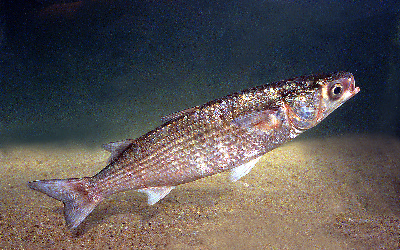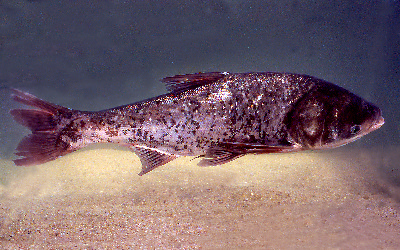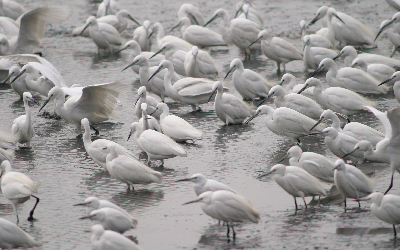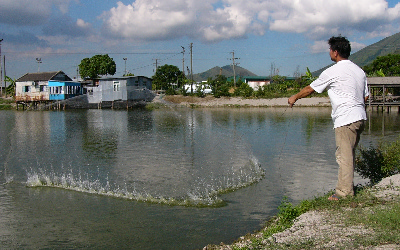Cantonese:
Mandarin:
English:
6. Fishponds
There are many fishponds in Yuen Long. The flat and extensive flood plain at Shan Pui River estuary and Nam Sang Wai has clay soil making it suitable for building fishponds. Fishpond and gei wai culture started in the 1930s to 1940s. In the 1960s, aquaculture in Deep Bay area began to thrive and many paddyfields and gei wai were converted to fishponds, transforming Yuen Long into the largest fishpond area in Hong Kong. Nowadays, a number of them have undergone urban development. For example, the new channel of Kam Tin River is constructed by excavation of several fishponds, and those little pools in triangular shape beside it are actually parts of the original fishponds.
The 1980s was the peak period for Hong Kong's fishpond culture industry. In 1986, the area of fishponds in Hong Kong was about 2130 hectares, and production peaked at 6000 tonnes. Facing severe competition from freshwater fish originating from mainland China, and due to urbanization and water pollution, the fishpond culture industry has been diminishing since the 1990s. In 2012, fishponds occupied 1150 hectares, and 2306 tonnes of fish were produced.
Traditionally, cultivated fish in local fishponds included: Common Carp (Cyprinus carpio), Silver Carp (Hypophthalmichthys molitrix), Mud Carp (Cirrhinus molitorella), Grass Carp (Ctenopharyngodon idellus) and Big Head Carp (Aristichythys nobilis). Grey Mullet (Mugil cephalus) was the specialty product of Yuen Long fishponds, and Deep Bay was the nursery ground of the fish. In the past, fishermen could harvest the fry in the estuary between winter and spring, and then raise them in the fishponds. The practice is no longer feasible because of pollution in Deep Bay. Fish fry are now mainly imported from mainland China and Taiwan. Recently, local fishponds have successfully cultivated species such as Pompano (Trachinotus blochii), Giant Perch (Lates calcarifer) and Giant Grouper (Epinephelus lanceolatus).
Fishponds have a high ecological value in addition to aquaculture use. A number
of adjacent fishponds can form a wetland habitat for waterfowl and other wildlife.
When fishponds are drained for harvesting and cleaning, the small fish and
invertebrates that remain becomes a banquet for birds. This is a good example of how human activities can exist in harmony with nature. Fishponds are also used for
stabilizing microclimate and storing stormwater.

Grey Mullet (Mugil cephalus)

Mud Carp (Cirrhinus molitorella)

Grass Carp (Ctenopharyngodon idellus)

Big Head Carp (Aristichythys nobilis)

The new channel of Kam Tin River is constructed by excavation of fishponds

Flock of egrets foraging at a fishpond

Flock of egrets foraging at a fishpond

A fisherman is releasing a fish net to catch fish

A number of adjoining fishponds

